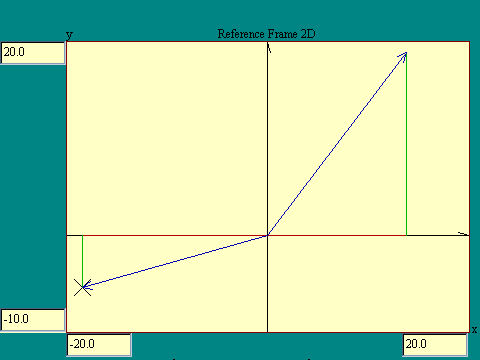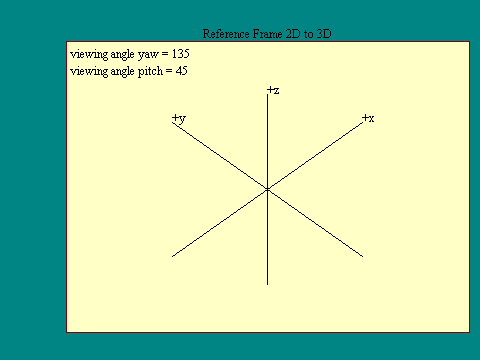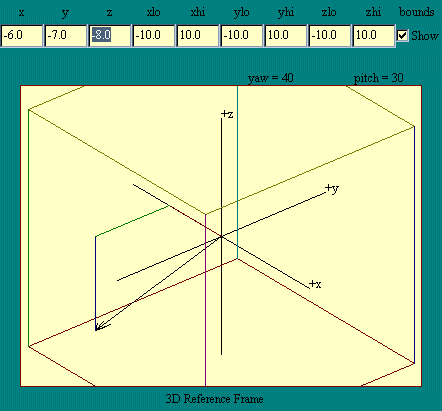|
Everything has to be somewhere...
|
At its most basic, here is what science is all about.
Observations are made of how some aspect of the universe works.
Measurements are made to attach numbers to the observed events
and a theory is invented that explains the numbers. What the
theory allows us to do is to calculate the results of experiments
which have not been done yet. The theory is tested by having its
predictions compared to yet another observation. If there is
agreement between the predictions of the theory and experimental
results over a long time with many experiments and experimenters,
eventually we accept that theory as one of the "laws of
nature" which govern the working of the universe. In the
course of the verification, or even later after a theory has
achieved "law" status, if a verifiable experiment comes
up with a discrepancy between the theory's prediction and
experimental observation, we go back and scrap the theory or
modify it to cover the new observations. This cycle of theory and
test boils down to the pursuit of truth. The pursuit of objective
truth, truth that is verifiable by anyone willing to expend the
effort, has been and is the most productive activity in which
humankind has ever engaged.
|

|

|
For us to participate in scientific discovery, we need to be
solidly grounded in the basics. That is the purpose of this
course on mechanics. There are a few fundamental concepts we need
to nail down before we begin toying with some of the laws of
nature that were established by others. And, we must really
understand those laws before we can begin to think about
extending the scientific process I described in the previous
paragraph.
First let's think about physical quantities . These are the
building blocks in terms of which the laws of nature are
expressed. Among these are length, mass and time and a lot of
others derivable from these. Examples of quantities that may be
derived from distance, mass and time are force, velocity,
momentum, energy and acceleration.
Those physical quantities which are distinctly associated with
an object , like mass for example are called properties of the object. As we
deal with these quantities I will try to always be clear on
exactly which I am working with. There is nothing magic by the
way about the choice of length, mass and time as the fundamental
quantities. We could have begun with others and derived
these.
Now if we are to determine useful things about objects in
terms of the physical quantities, we must agree on the units of
measure of these quantities. Units of measure allow us to answer
the "how much" questions. How much length? How much
mass? How much time? I will mainly to stick to the International
System (SI) which has become the
most commonly accepted for scientific work. In this system of
units the standards are: length - meter, mass - kilogram and time
- second. If you insist on using a furlong, stone weight,
fortnight system you will probably end up spending a lot of time
doing unit conversions.

Are there any questions?
|
|
Mechanics is the study of objects in motion so we are going to
need a way to describe both objects and motion. At this stage of
the story we are going to limit ourselves to objects that may be
regarded as particles. A particle is a bit of matter whose size
is small enough relative to our observations that its dimensions
may be neglected. For example the Earth might be considered a
particle if we were studying its orbit around the Sun, but not if
we want to know anything about its rotation about its axis. The
nucleus of an atom might be a particle in an experiment on elastic scattering ,
but not in considering nuclear fission.
Under the restriction that our objects are going to be
particles, the only property related to mechanics an object can
have is mass. This means that to describe an object only requires
that its mass be specified. Any other property you can imagine,
let's say density for
example, requires that the object have some size.
Now let's examine what we mean when we say something is in
motion. We are all familiar with motion. Birds move. Cars move.
We see examples of motion all the time. All we need to do is to
quantify this everyday experience a bit to apply it to mechanics.
Motion always implies the passage of time. Let's define two
specific times called early and late. If an object is found at a
different position at
time=late than where it was at time=early then we say movement
took place. If there is still a difference in position when time
late is as close to time early as we can imagine, then we say the
object is in motion.
|

|

|
The word "dimension" showed up recently in the sense
of the extent of an object. The other sense of that word,
dimension, has to do with the nature of the space being
considered. For our purposes, neglecting Einsteinian relativity,
we live in a three dimensional space. The surface of a sheet of
paper or a computer screen might represent a space of two
dimensions. A single line, like the number
line , represents a space of one dimension.
The words "infinite" and "infinitesimal"
also need a bit of explanation. I would like to have infinite
mean big enough so that bigger makes no practical difference. An
infinite distance, under this definition, might be 1 centimeter
if we are discussing the gravitational attraction between two
molecules. Let us agree that infinitesimal is small enough that
smaller doesn't matter. Like the radius of the Earth in
considering planetary orbits.
Another fundamental concept in
mechanics is that of an observer and the observer's frame of
reference. Frequently we give no thought to the observer or the
reference frame in everyday life because we ourselves are doing
the observing and our frame of reference is a system of measure
relative to the location of our eyes. For example we judge
location by how far left, how far up and how far away. We
determine motion by noticing a change in location. In this course
I will be asking you to imagine experiments in which the
observer's reference frame may be other than your own.
|
|
As I mentioned, intuitively we detect motion as a change in
position over time. In mechanics it is the same but we need more
than "eyeball" precision in determining position. We
will quantify the position of
particles by measuring from a fixed point in our reference frame
to the particle. The fixed point from which measurements are made
is called the "origin" of the reference frame. There
are two convenient ways to measure the position of a particle.
One is to measure along the dimensions of the space in which our
reference frame is constructed. The other is to measure the
distance and direction from the origin to the particle.
Suppose we wish to measure the position of a particle which
could only move in a straight line. We would choose a one
dimensional space in which to study the motion since the other
possible dimensions do not add any intelligence. The reference
frame would then be a real number line called an axis and the
position would be just how many length units the particle was
from the origin. In this one dimensional model, the two ways of
measuring position are identical. The particle must lie exactly
on the one axis of the reference frame so the measure along the
dimension of the reference frame is the distance from the origin
to the particle. The Real Number Line display seen previously is
an example of a one dimensional reference frame.
|

|

|
Now consider a case where a particle is constrained to stay in
a plane, that is on a flat surface. Here we would choose a two
dimensional space in which to study the motion. We choose the
reference frame to be two number lines (axes), perpendicular to
each other with zero as their common point. Making the lines
perpendicular is a trick to simplify the mathematics but any two
non-parallel lines could serve. Any set of lines that could
serve as axes for a reference frame is said to "span"
the space in which the reference frame is constructed.
Traditionally the horizontal axis is labeled the x axis and the
vertical the y axis.
Working in two
dimensions, we now have distinct ways of locating a particle. One
is to measure its position along one of the axes, then measure
its position parallel to the second axis. That pair of numbers,
called the coordinates of the particle uniquely establish its
position. One way of designating the coordinates is to place the
two numbers in parentheses like (a,b). This notation is called an
ordered pair. The x coordinate (a) is always first then,
separated by a comma, the y coordinate (b).
The other way of locating a particle is to measure the
distance from the origin to the particle and measure the angle of
that line from the horizontal axis so that we have a magnitude and direction. Run
the Reference Frame 2D display to see
these concepts in action.
|
|
Finally think about a particle that is free to move in three
dimensions. To span a three dimensional space we need three axes
for our reference frame. Again we will make them all share a
common zero and be mutually perpendicular. Sometimes you may see
the word "orthogonal" to describe lines that are all
perpendicular to each other. Again we could locate a particle by
giving its coordinates (a,b,c) or by giving the distance and
direction from the origin of the reference frame. Note that the
direction in three dimensions now requires two angles, a latitude
and longitude for example. As a general principle it will require
as many numbers as there are dimensions in our space to specify
the location of a particle. The number of numbers required to
specify the position of any object, not just a particle is called
the "degrees of freedom" of that object.
Up to two dimensions, the representation of the reference
frame on the monitor screen posed no problems. Once we add the
third dimension, the two dimensional nature of the screen gets in
the way. Some imagination will be required to see this flat
display as three-dimensional. Picture the situation like this.
Begin with the x and y axis as described in the two dimensional
case. Now suppose that instead of the axes lying on the surface
of the screen, the screen is a window through which you look to
see the reference frame axes somewhere behind the screen. Also
imagine that there is another invisible horizontal axis parallel
to the screen through the center of the volume of space outlined
in the display, about which we may rotate the image. We will call this
the pitch axis.
Next imagine that I draw a third reference frame axis, with
its positive end sticking straight toward the screen. Call that
axis the z-axis. Since the z-axis is sticking straight toward
you, you can not see it until we rotate the frame about the pitch
axis. In fact we will rotate it around both the pitch axis and
the newly created z-axis in the next display. The angle through
which an object is rotated about the pitch axis is called the
pitch angle, about the z-axis, the yaw angle.
The choice of which axis is x, which is y and which is z is
sometimes a bone of contention among different branches of
science and always a point of confusion if not spelled out. What
we will use is called a right-handed reference frame. That means
if you hold the thumb, fore finger and middle finger of your
right hand more or less at right angles to each other, your thumb
will point along the positive x axis, your fore finger will point
along the positive y axis and your middle finger will point along
the positive z-axis. Whatever orientation you hold your hand in,
the relationships among the axes will be the same.
Run the Reference Frame 2D to 3D
display for an illustration of this kind of reference frame.
|

|

|
We have been observing
the reference frames we have talked about from somewhere outside
the frame itself. If the reference frame was really a solid
object suspended in space, we could walk around it and presumably
view it from above or below. We may find it convenient to look at
frames that way or we may wish to view objects as if we were in
the frame ourselves. Remember we created the idea of a reference
frame so that we could determine where things were located and
many times we want to know where they are relative to us, the
observer. If we do choose to look at a reference frame from the
outside, we may want to re-orient the frame so as to see objects
in the frame from various perspectives.
Now for one other problem which comes up when looking at three
dimensional reference frames. In one and two dimensions the
screen cursor served to point out locations in the reference
frame. In three dimensions only two of the axes can lie in the
plane of the screen where the cursor is. And depending on the
orientation of the frame in the monitor, none of the axes must
lie in that plane. So the cursor is unavailable for us to use in
marking positions. To identify a point in a three dimensional
frame we will have to specify the distance along each of the axes
to the point. Run the Reference Frame
3D display to see how this will work.

Are there any questions?
We have spent a lot of time describing how to locate objects
in spaces of 1, 2 or 3 dimensions. Much of our work will be done
using a two dimensional representation, even if we are
considering a single dimension of space. That will allow us to
plot position as a function of time. In fact we have been a
little fast and loose with the idea of locating an object. Not
only must we specify x, y and z, but also when. We will speak
more about this idea later.
|

 Next
Next
 Previous
Previous
 Other
Other
|




